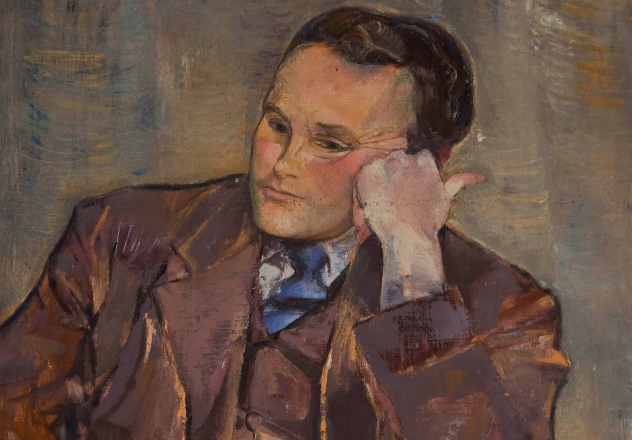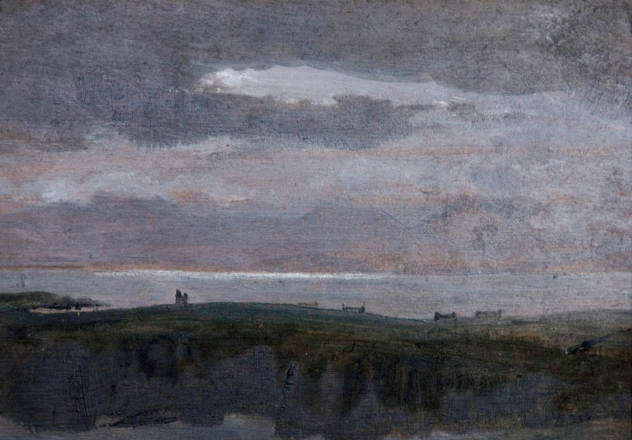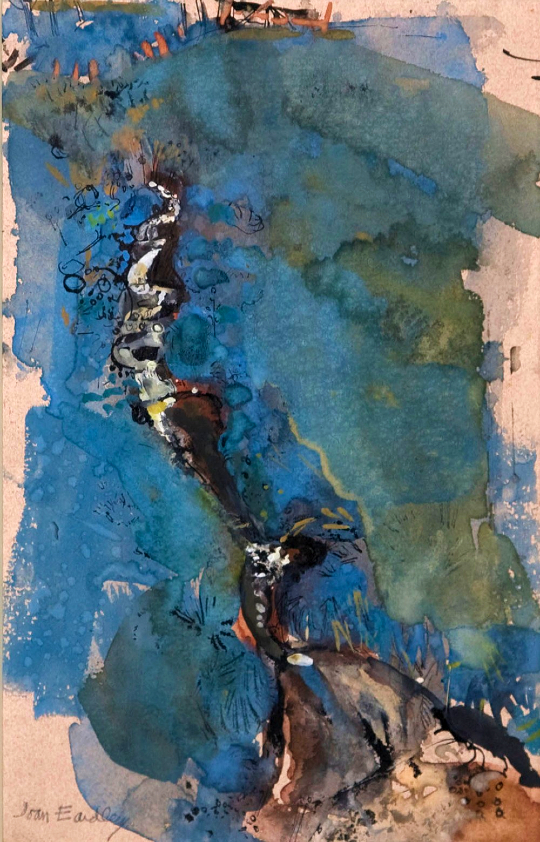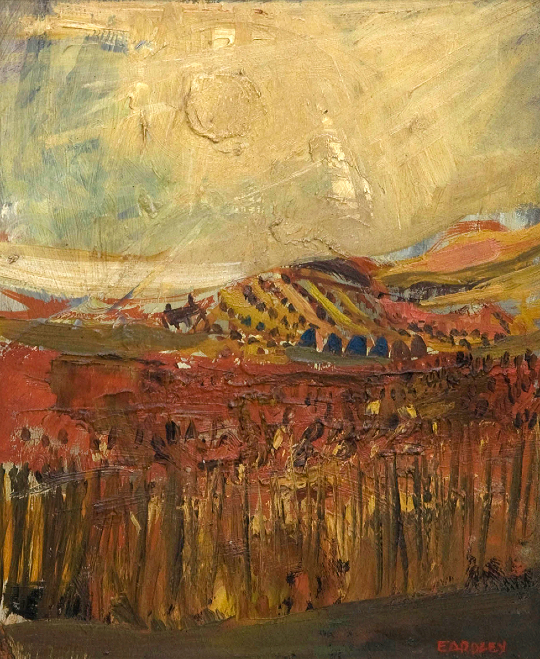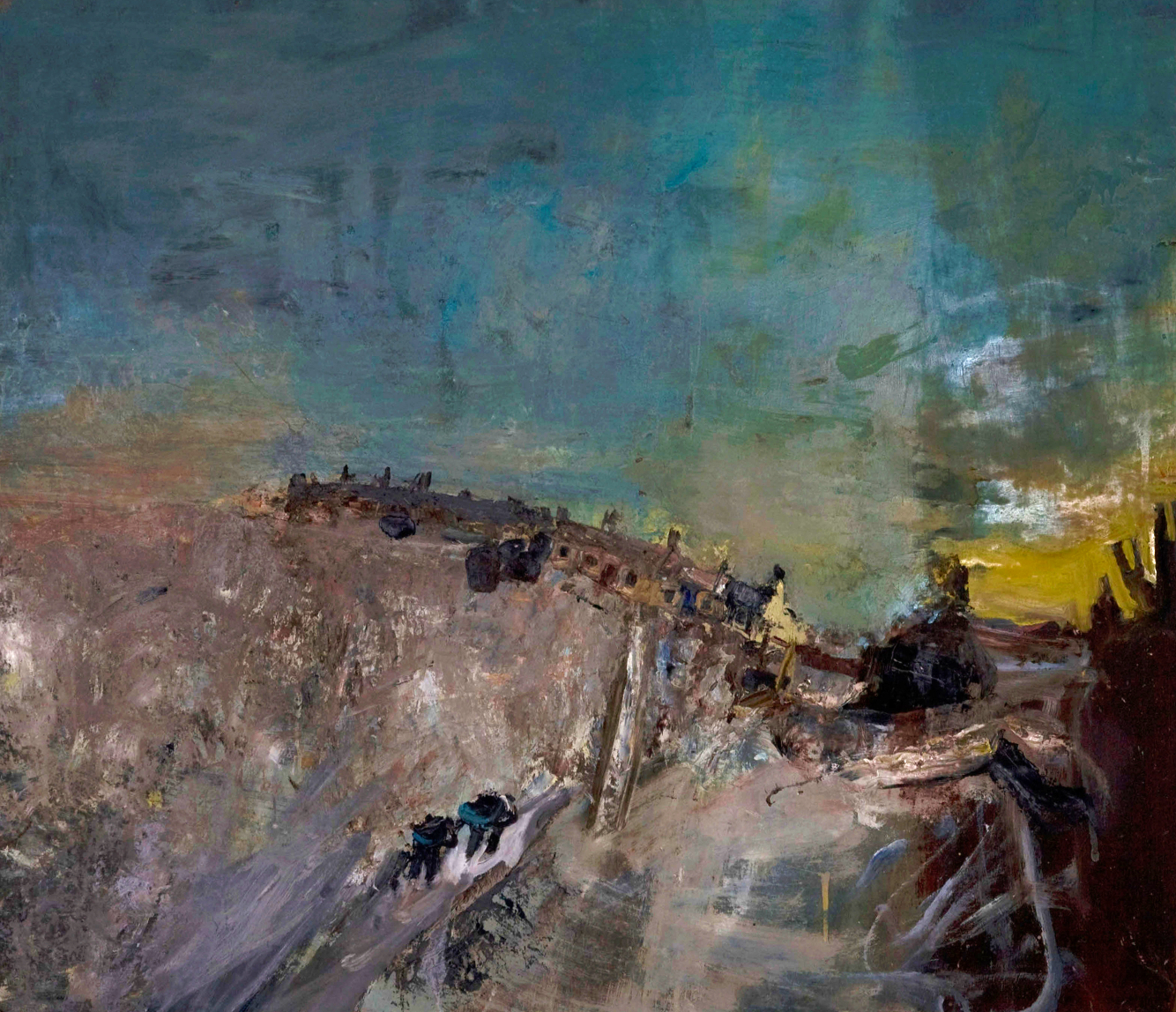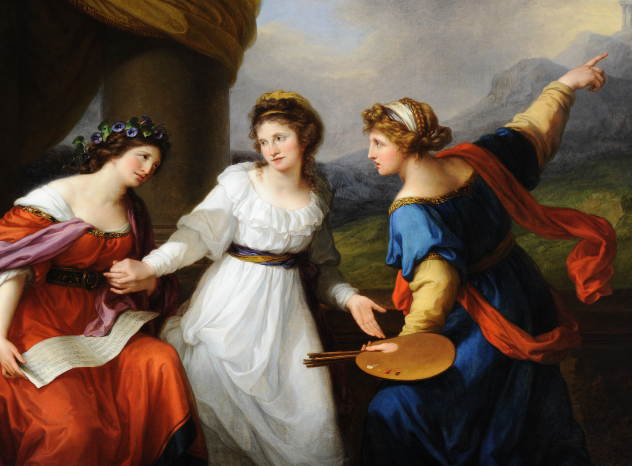2021 marks the centenary of the birth of Scottish artist Joan Eardley (1921–63). Her acutely observed and expressive paintings of post-war Scotland stood at the vanguard of 20th-century British art. She is best known for her portraits of Glaswegian tenement children and for her remote land and seascapes of rural Scotland. Her ascending career was tragically cut short by cancer at the age of just 42.
Three of Eardley's pictures are in the collection of the National Trust at Mottisfont Abbey, having been brought there in 1996 within a gift of 81 works of art given by the artist Derek Hill (1916-2000). Hill had a longstanding and personal connection to Mottisfont, having been a close friend and confidante to Maud Russell (1891–1982) who lived there with her husband Gilbert (1875–1942) from 1934. Arranged through the National Art Collections Fund (Art Fund), Derek Hill’s substantial bequest includes works by Edgar Degas, L. S. Lowry, Vanessa Bell and Ben Nicholson. It is one of the most important collections of modern art in the National Trust.
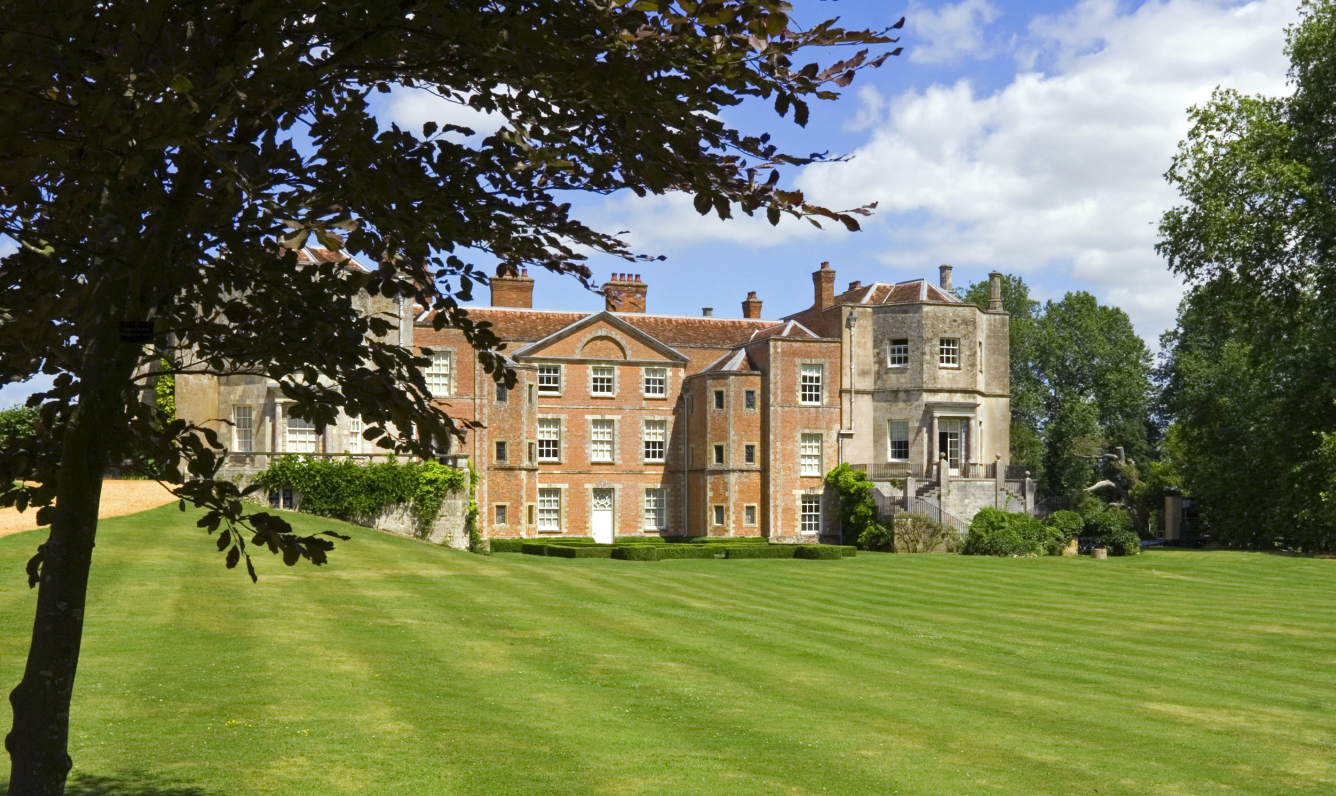
The south front of Mottisfont Abbey, Hampshire
©National Trust Images/Robert Morris
A tribute to Eardley
In May 1964 Derek Hill published a moving tribute to Joan Eardley in an issue of Apollo, recalling the exact moment he had heard of her death in August 1963: ‘Click – and the memory shutter opened and closed, leaving an indelible imprint’. [1]
A land and seascape painter who, like Eardley, inspired communities of artists to paint isolated iron-bound places, Hill saw in Eardley’s marine pictures an ‘immediate sincerity and skill’ which had been unsurpassed ‘since Turner’. ‘No one before her had observed the things and the places she painted more clearly than she did’. [2]
City and country
Joan Eardley is known for two different – but to her mind not unconnected – subject matters: post-war urban children painted from her studio in Townhead, Glasgow, and land and seascapes painted in Catterline on the Aberdeenshire coast. Having discovered this remote fishing village in 1950, she commuted between the two places until she became too ill to do so.
Born in Sussex in 1921, Eardley moved up to the suburbs of Glasgow with her mother and sister at the outbreak of the Second World War. She trained at Glasgow School of Art before establishing in 1949 a studio in an old tenement building in Townhead. This deprived area north-east of the city centre was declared a CDA (Comprehensive Redevelopment Area) after the war and gradually razed to make way for modern high-rises. The upheavals of post-war gentrification are perceptively and humanely observed in Eardley’s Glasgow work.
Land and water
Over 120 miles north-east of Townhead, the North Sea village of Catterline became Eardley’s second home and working place throughout the 50s and early 60s. She lived simply, in basic accommodation and in quiet synergy with the local community.
Eardley also worked in other parts of rural Scotland, notably Comrie in Perthshire and the Ettrick Valley on the Borders, where her close friend Audrey Walker lived in a shepherd’s cottage called Caverslee. That is where Eardley painted Study of a Burn, later purchased by Derek Hill. ‘Burn’ is the Scottish term for a watercourse: a large stream or small river.
Walker’s photographs of Eardley at work are deeply intimate, and provide insights into the artist’s compulsive practice of painting on location in all seasons, all weathers and at all times of the day and night. Absorbed by and rooted in her environment, Eardley worked with intense energy and technical brilliance, responding to nature in real time by ‘pouring her paint on with tremendous freedom and power’. [3] The harsh isolation of her surroundings resulted in a prolific body of work, usually produced at a few select locations each year:
‘I find that the more I know a place or the more I know a particular spot, the more I find to paint…I take my paints to a certain place, begin to paint there…by the end of the summer I have not moved from that place. In fact I have worn a kind of mark in the ground – there is no grass left.’ [4]

Joan Eardley painting at Catterline, 1959
Presented by Mrs Patricia M. Black, the artist's sister, 1987 / Scottish Gallery of Modern Art Archive, National Galleries of Scotland / © Audrey Walker
Derek Hill admired Eardley’s skilful bravery with paint. Referring to the impulsive ‘action painting’ of Abstract Expressionism, Hill wrote that Joan Eardley used ‘all the violent splashes and dribbles of some of today’s painting in their correct context’, depicting water, a leaden sky, or a late summer cornfield with an honesty that came from sustained observation. [5]
Sometimes the artist would apply to the board or support actual pieces of the landscape that surrounded her, mixing these organic materials into the paint. ‘Blades of grass and even corn-stalks stick to the paint’, Hill wrote, ‘but one knows that this has happened in the immediacy of creation and not for reason of clever afterthought’. [6]
Final years
In 1962 Eardley first showed signs of serious illness and was later diagnosed with breast cancer. Her work grew ever more imposing and vigorous in these final years.
In 1963 she was elected Academician of the Royal Scottish Academy and on 16 August of that year she died, her ashes scattered on Catterline beach. Catterline in Winter, owned by Derek Hill, was among the paintings displayed at Eardley’s memorial exhibition in 1964.
Notes
[1] Derek Hill, ‘A Tribute to Joan Eardley’, Apollo, 1 May 1964, 79, 27, p. 419.
[2] Ibid.
[3] Annette Stephen quoted in Cordelia Oliver, Joan Eardley, RSA, Edinburgh 1988, p. 73.
[4] Joan Eardley quoted in Ibid., p. 76.
[5] Hill, ‘A Tribute to Joan Eardley’, p. 419.
[6] Ibid.
